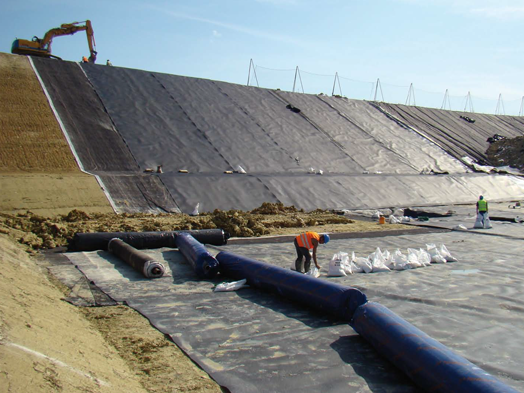

Despite waste sorting and exploitation efforts, more than 20 million tons of nondangerous waste are still buried every year in France in landfill sites called Hazardous Wastes Facility (HWF).
HWFs are very strictly regulated to prevent water table and soil pollution. They are therefore located on sites whose geological, hydraulic and geotechnical characteristics are considered suitable for landfill. There is a 200 metre-wide safety perimeter around each site.

Placing geomembranes at the bottom of a cell
© Antea Group

© Antea Group
HWFs have to be watertight. This is achieved by an impermeable lining of geomembranes. Geomembranes are part of the geosynthetics family, synthetic materials used for many civil engineering applications. Other geosynthetics are used with geomembranes to protect them against shear failure, to reinforce the embankments around a landfill area, and to drain liquids and gases created by decomposing waste.
When the landfill site has been filled, a final cover consisting of geosynthetics and vegetal ground is laid over waste. The long-term stability of an HWF’s embankments can also be increased by the addition of geosynthetics.